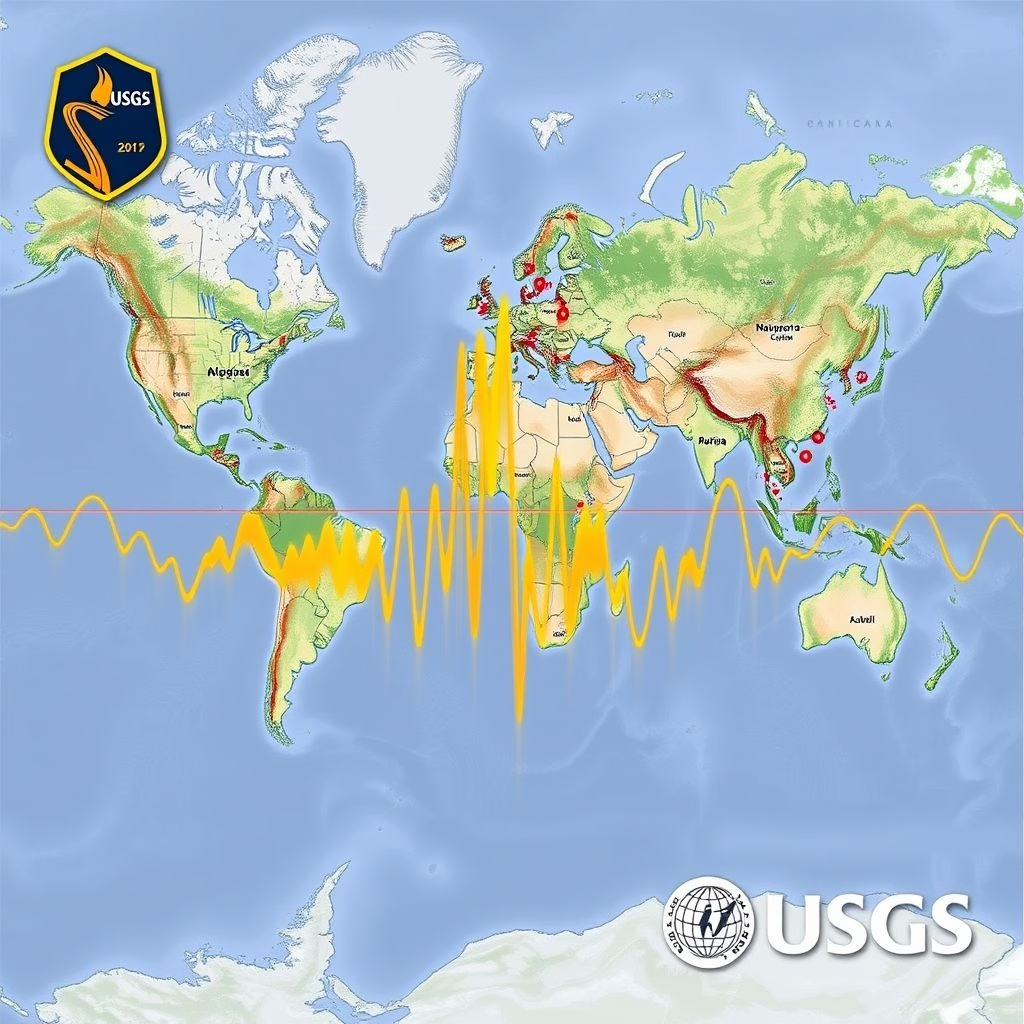Shaking Things Up: Recent Earthquake Activity Around the Globe

A World in Motion: Tracking Recent Seismic Activity
The Earth is a dynamic planet, and its internal processes manifest in many ways, including earthquakes. Recent data from sources like the United States Geological Survey (USGS) and QuakePulse paint a picture of significant seismic activity across the globe. From minor tremors to powerful, destructive events, understanding this activity is crucial for preparedness and awareness.
QuakePulse: A Snapshot of Recent Events
QuakePulse, a valuable resource for tracking earthquake data, provides a fascinating, albeit sometimes unsettling, look at the constant movement beneath our feet. Their reports highlight a substantial number of earthquakes occurring worldwide across various timeframes. According to their data, in the last 24 hours, they recorded 113 earthquakes. Looking back over the past week, that number jumps to 689. Over the past month, a staggering 3,899 earthquakes were detected. And perhaps most impressively, or alarmingly, over the past year, QuakePulse has tracked a total of 59,335 earthquakes.
Notable Recent Events
While the sheer volume of seismic events can be overwhelming, focusing on specific occurrences helps to put things in perspective. Within the last 24 hours, a magnitude 5.1 earthquake occurred 191 km SSE of Vilyuchinsk, Russia. This event serves as a reminder that even relatively moderate earthquakes can occur in geographically remote areas.
Over the past seven days, another notable event occurred. A magnitude 6.3 earthquake struck 108 km SSE of Lata, Solomon Islands. Earthquakes of this magnitude can cause significant damage and pose a serious threat to life and infrastructure in affected regions.
The Biggest Shakers: Strong Earthquakes in the Past Year
Examining the past 30 and 365 days reveals that the strongest earthquake recorded was an M8.8 near the Kamchatka Peninsula, Russia. Earthquakes of this magnitude are considered major events, capable of generating tsunamis and causing widespread destruction. The Kamchatka Peninsula, a region known for its volcanic activity and seismic vulnerability, experienced a truly powerful event.
The Role of the USGS
The USGS plays a critical role in monitoring and disseminating earthquake information. They offer a wealth of data and resources, including an online map application that allows users to visualize recent earthquake activity in real-time. Their commitment to providing accurate and timely information is invaluable for scientists, emergency responders, and the public alike.
Understanding the Data: Location, Magnitude, and Impact
When analyzing earthquake data, it’s important to consider several factors. The location of an earthquake is critical, as it determines which areas are most likely to be affected. The magnitude of an earthquake, measured on the Richter scale, is a measure of its energy release, with each whole number increase representing a tenfold increase in amplitude. Finally, understanding the potential impact of an earthquake involves considering the local geology, building codes, and population density.
Staying Informed and Prepared
The constant movement of the Earth underscores the importance of staying informed about seismic activity. Regularly checking sources like the USGS and QuakePulse, as well as local news outlets, can help you stay aware of potential risks. Furthermore, taking steps to prepare for an earthquake, such as securing your home, creating an emergency kit, and knowing what to do during an earthquake, can significantly increase your safety.
The information presented here is based on publicly available data and is intended for informational purposes only. It’s important to consult with relevant authorities and experts for specific advice and guidance related to earthquake preparedness.
The data provided is dynamic, and the numbers and specific events mentioned will change over time. For the most up-to-date information, please consult the resources below.
Further Reading:
For more detailed information on earthquake activity, you can consult the following resources:
- https://earthquake.usgs.gov/earthquakes/map/
- https://earthquaketrack.com/us-nj-secaucus/recent
- https://www.quakepulse.com/




